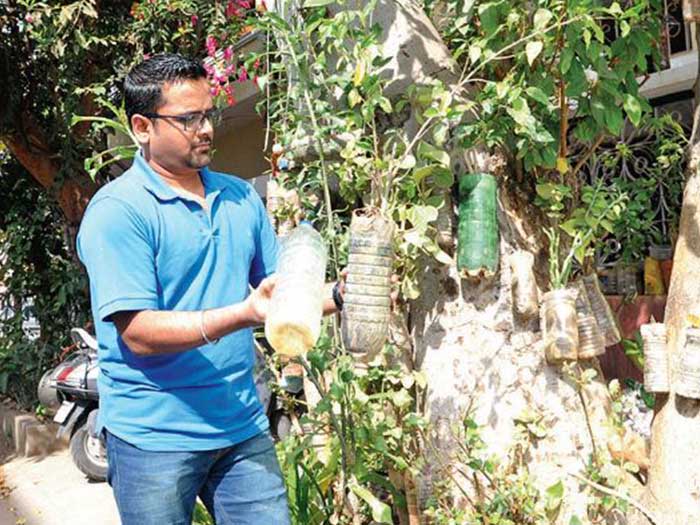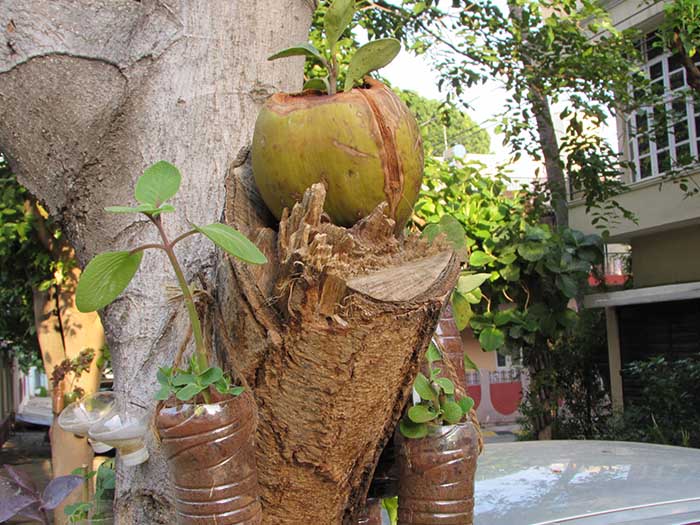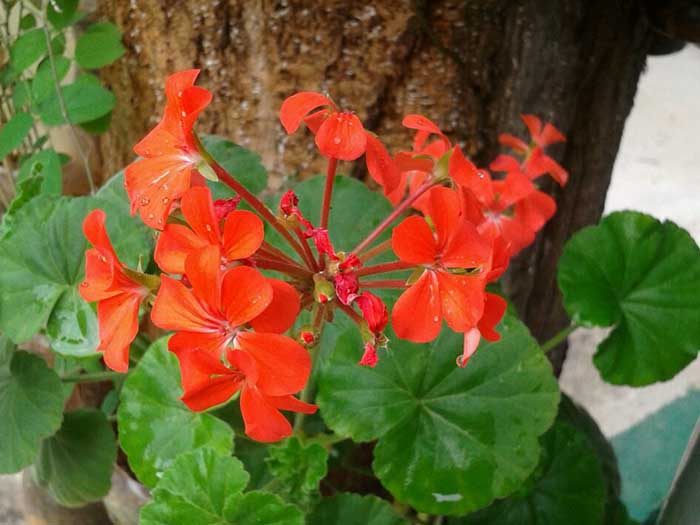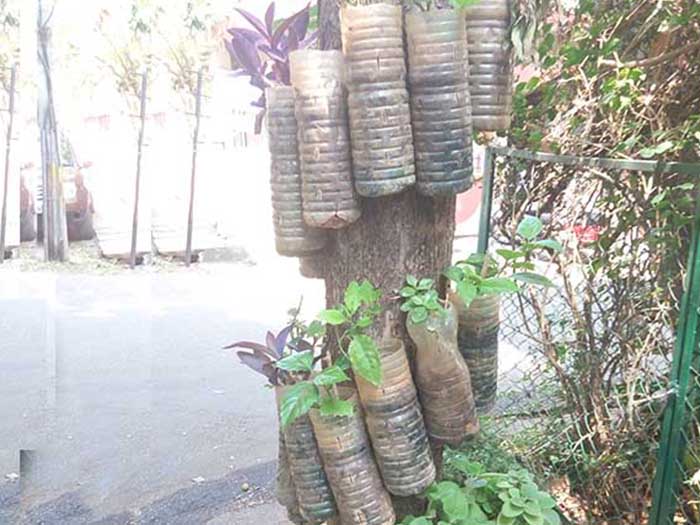In Conversation with Sadhan Radhakrishnan, Environmentalist
Some intend to make a change in society, while some simply follow their passion and become changemakers of society. One such personality is Sadhan Radhakrishnan, who started missing the green balconies of his Mumbai home when he moved to the Garden City, Bengaluru in 2011. A lack of space in his rental apartment forced him to think of ways to keep his gardening passion alive. He had a ‘Eureka’ moment when one fine day, staring at the discarded plastic bottles, Sadhan decided to use them as pots to plant seeds in them.
Having completed his graduation in Physics and work experience of more than 16 years in technology, Sadhan had no training in gardening. It was a hands-on knowledge that he had gained from his parents and the passion that earned him his nickname ‘Greenie in the Bottle’. He started building a vertical garden using waste materials like plastic bottles, coconut shells and waste thermocol packaging as pots for his plants.

Sadhan Radhakrishnan, an environmentalist who is known for building a vertical garden using bottles as pots for his plants. Photo Credit: Sadhan Radhakrishnan.
Organic Facts caught up with Sadhan Radhakrishnan and talked to him about his experience as a changemaker in the organic space.
OF: The green initiative of using waste plastic bottles to plant trees is quite innovative. However, did you have any concerns using plastic bottles for gardening?
SR:
When I started experimenting using waste plastic bottles as pots for plants, I had only planted a few ornamental plants, obviously due to the concern of the ill-effects of plastic and small space for the plant. However, I once showed it to one of the environmentalists and he was happy with this innovative idea. This ruled out the prior concern, while for the latter, once the plant grows big enough I usually transfer the plants to bigger pots, thermocol boxes or plant them directly into the ground.
What started as a hobby with 2-3 plants, have now scaled up to the idea of a vertical garden with more than 250 plants of different varieties including orchid, fenugreek (methi in India), bishop’s weed (ajwain in India), aloe vera, coriander, spinach, and many more.

Photo Credit: Sadhan Radhakrishnan
OF: As a changemaker, what do you think has been the most impactful change you’ve made on people’s mind?
SR: Once I scaled up my gardening, I started hanging the plants on roadside trees. It not only made the lane of Mahalakshmipuram in Karnataka, India greener but also attracted a lot of small birds such as cuckoos, mynas, tailor birds, parrots, woodpeckers and even tiny fellas like squirrels.
People in my neighborhood started keeping the area cleaner, morning and evening walkers started appreciating the idea of beautifying the environment from the otherwise environmental toxins, and the blooming flowers are a sight of delight to the passers-by who are inquisitive to join and spread the initiative.
Sometimes I give my saplings to people for free with the only condition of them promising to take good care of it. Additionally, I donated around 14-15 saplings of jackfruit and mango to people who were working on the river conservation initiative.
I have also distributed free seeds to many. Why free? Because I recently tied up with a local fruit juice seller who used to throw away all fruit seeds after making their juice. I asked him to give me the seeds of those fruits which include seeds of avocado, custard apple, muskmelon, and chikoo. Thereby, I now have a mini nursery at my place wherein I give away free saplings to family, friends, passer-by or anyone who is interested. FYI – single sapling of avocado may cost you around ₹ 300-400 in a nursery. However, if you grow your own, it’s free.
There have also been instances where some have stolen the saplings hung on the roadside trees. But, I am not offended, instead, I am happy that it would be beautifying someone else’s lane. Encouraging people and spreading this initiative to many has been very inspirational for me.

Photo Credit: Sadhan Radhakrishnan
OF: What advice do you have for people who want to join you in your initiative from across the globe? Can you share a quick DIY SOP for them?
SR: Gardening is a hobby for me and a great stress buster too. I use my spare time during weekends to pursue my gardening and during weekdays, I spend about 10-15 minutes watering them (once every two days usually). So, it’s quite manageable for anyone who wants to join in the green initiative along with their current occupation. All you need is some time.
For instance, plastic bottles are free. Even friends or neighbors will give it to you instead of throwing it in the dustbin. Plants are free because you can exchange or take plant cuttings from our neighborhood areas. Seeds are free. Try having a tie-up with your local juice seller, as mentioned above. The soil is free. I use existing soil from my garden. And, even fertilizer is free because instead of chemicals you can use vegetable peels, coconut fiber, eggshells, and dry leaves and branches.
One could grow ornamental crotons, geraniums, hibiscus, lilies, orchids, tomatoes, spinach and different kinds of herbs like coriander, mint, basil, etc. Although the yield is not much because of space constraint, it is good to pluck the aloe vera leaves and apply the gel when you’re wounded, or maybe have the mint ready for salad serving. [1]
You not only save and beautify the environment but you save yourself from chemically grown foods too. It’s a win-win-win from all sides.

Reusing plastic bottles at Sadhan Radhakrishnan’s farm. Photo Credit: Sadhan Radhakrishnan
So, for anyone who is interested, here is a quick 5 step DIY- How to plant trees in plastic bottles?
- Get a plastic bottle
- Cut open the cap side of the bottle
- Put some holes at the base (for drainage)
- Fill up the bottle with layers of vegetable peels, coconut fiber, soil, and dry leaves
- Place the seed or plant saplings in the bottle and water them regularly
That’s all! You are all set to create a mini-vertical garden.
Oh! And, you can get creative with these methods, too. For instance, you cut the bottle horizontally and tie a rope at both ends, fill up the soil and put up plants. One can also color the bottles to make it look more attractive.
